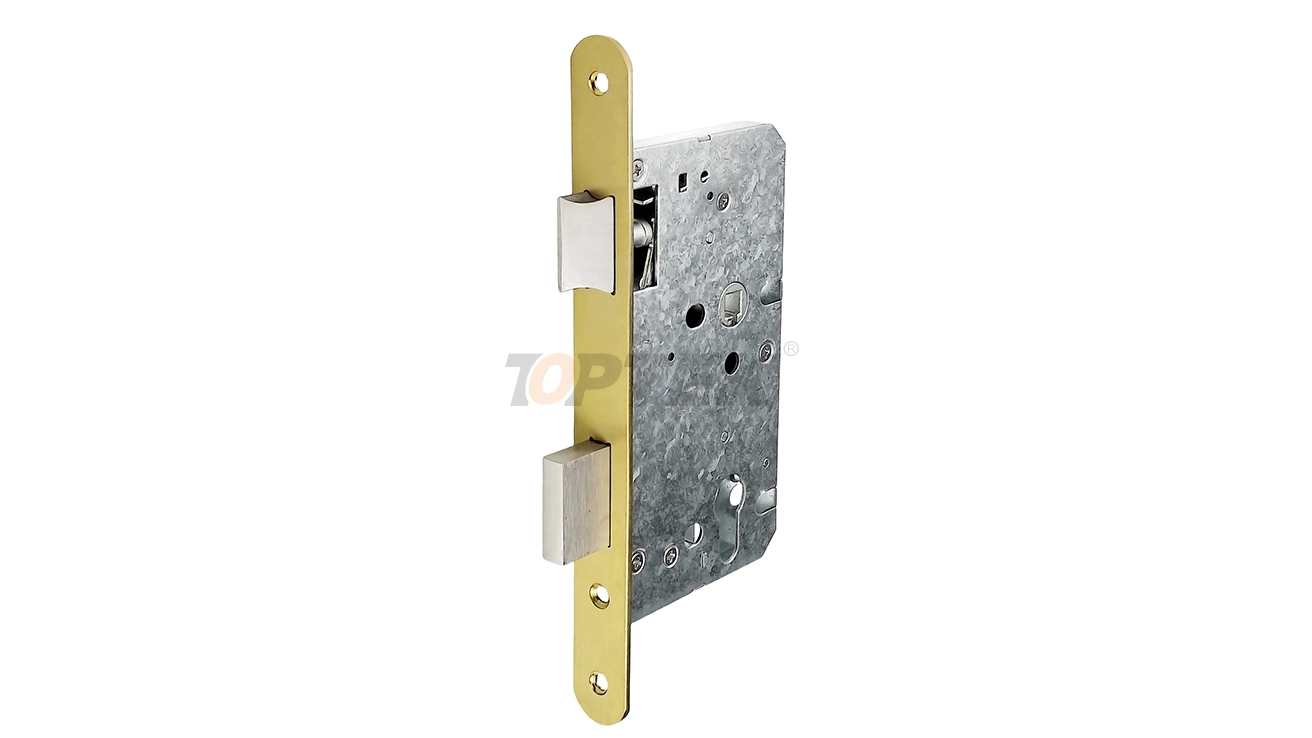If you're dealing with an old mortise lock that's giving you trouble, you might be wondering whether you can swap it out for a more modern cylindrical lock. The short answer is yes, but the process requires careful planning, some woodworking skills, and the right approach to ensure your door remains secure and functional.
This comprehensive guide will walk you through everything you need to know about replacing a mortise lock with a cylindrical lock, from understanding the key differences between these locking mechanisms to executing the replacement properly. You'll learn about the challenges involved, the tools required, and step-by-step instructions to complete this home improvement project successfully.
Understanding Mortise vs Cylindrical Locks
Before diving into the replacement process, it's essential to understand what makes these two lock types different. A mortise lock fits into a rectangular pocket (called a mortise) that's cut into the edge of the door. These locks typically feature a large, rectangular faceplate and often include both a latch and deadbolt mechanism in a single unit.
Cylindrical locks, on the other hand, are installed through round holes drilled in the door. The lock cylinder passes through the door from one side to the other, with the locking mechanism contained within the knob or lever handles. Most modern residential doors use cylindrical locks because they're easier to install and replace.
The fundamental difference lies in how they're mounted. Mortise locks require a deep rectangular cavity, while cylindrical locks need only two round holes—one large hole through the door face and a smaller hole through the door edge for the latch bolt.
Why Consider the Switch?
Several compelling reasons might drive your decision to replace a mortise lock with a cylindrical lock. Mortise locks, while robust and secure, can be expensive to repair or replace. Finding replacement parts for vintage mortise locks often proves challenging and costly.
Cylindrical locks offer greater variety in styles, finishes, and security features. They're also significantly easier to install and maintain. When a cylindrical lock fails, replacement typically costs much less than mortise lock repairs.
However, this conversion isn't always straightforward. The existing mortise cavity must be properly filled and reinforced, and you'll need to drill new holes for the cylindrical lock installation.
Tools and Materials You'll Need
Gathering the right tools before starting ensures a smoother conversion process. You'll need a drill with various bit sizes, including a hole saw attachment for cutting the large cylindrical lock hole. A chisel set helps clean up the mortise cavity and prepare it for filling.
Essential materials include wood filler or a wooden block to fill the mortise cavity, sandpaper for smoothing surfaces, and wood stain or paint to match your door's finish. Don't forget the new cylindrical lock set, appropriate wood screws, and wood glue for securing any patches.
Consider having a jigsaw available if you need to cut custom wood pieces to fill larger mortise cavities. A level and measuring tape ensure proper alignment of your new lock components.
Assessing Your Door's Condition
Before beginning the conversion, carefully examine your door's current condition. Measure the existing mortise cavity dimensions and note its depth. Most mortise pockets extend 1 to 1.5 inches into the door edge, creating a significant void that must be properly filled.
Check the door's thickness, as cylindrical locks require specific door thickness ranges to function properly. Standard residential doors are typically 1.75 inches thick, which accommodates most cylindrical lock sets.
Inspect the door frame and strike plate area. You may need to modify or replace the strike plate to accommodate the new lock's latch mechanism.

Step-by-Step Replacement Process
Start by removing the old mortise lock completely. Unscrew the lock mechanism from the mortise cavity and remove any remaining hardware from both sides of the door. Clean out any debris from the cavity.
Next, fill the mortise cavity with appropriate material. For smaller cavities, high-quality wood filler works well. Larger mortises may require cutting a wooden block to fit the space precisely. Apply wood glue to secure any wooden inserts, and allow adequate drying time.
Once the filler is completely dry, sand the area smooth and flush with the door edge. Apply stain or paint to match the door's existing finish.
Now you're ready to install the cylindrical lock. Measure and mark the location for the new lock, typically 36 inches from the floor to the center of the lock. Use the template provided with your new lock set to mark hole locations accurately.
Drill the large hole through the door face using a hole saw. Work from both sides to prevent tear-out, drilling halfway through from each side until the holes meet. Drill the smaller edge hole for the latch bolt, ensuring it intersects properly with the face hole.
Install the latch mechanism first, then the lock cylinders from both sides of the door. Test the operation before fully tightening all screws.
Addressing Common Challenges
The most significant challenge in this conversion involves properly filling the mortise cavity. If not done correctly, this weak point can compromise your door's security and structural integrity. Take time to create a solid, flush repair that blends seamlessly with the surrounding door material.
Alignment issues can also arise when drilling new holes. Double-check all measurements and use a drilling guide when possible to ensure perfectly aligned holes. Misaligned holes can prevent proper lock operation and may require professional repair.
Some doors may have insufficient material around the old mortise to support a cylindrical lock properly. This situation might require more extensive repairs or professional consultation.
Maintaining Your New Cylindrical Lock
Once installed, your new cylindrical lock requires minimal maintenance compared to the old mortise system. Periodic lubrication of moving parts with graphite or light machine oil keeps the mechanism operating smoothly.
Check screw tightness annually, as normal use can gradually loosen hardware. Address any looseness immediately to prevent accelerated wear or security compromises.
If you notice any binding or difficulty in operation, investigate promptly. Cylindrical locks are generally reliable, but early intervention prevents minor issues from becoming major problems.
Making the Right Choice for Your Home
Converting from a mortise lock to a cylindrical lock can modernize your door hardware while improving convenience and reducing long-term maintenance costs. The project requires careful planning and execution, but most homeowners with basic DIY skills can complete it successfully.
Consider your door's age, condition, and architectural significance before proceeding. Historic homes might benefit from mortise lock restoration rather than conversion to maintain authenticity and value.
Take accurate measurements, invest in quality materials, and don't rush the process. A properly executed conversion provides years of reliable service while updating your home's security hardware to modern standards.
Cylindrical Lock
Grade 2 Cylindrical Locks
Commercial Cylindrical Lock
English
العربية
Français
Русский
Español
Português
Deutsch
italiano
日本語
한국어
Nederlands
Tiếng Việt
ไทย
Polski
Türkçe
አማርኛ
ພາສາລາວ
ភាសាខ្មែរ
Bahasa Melayu
ဗမာစာ
தமிழ்
Filipino
Bahasa Indonesia
magyar
Română
Čeština
Монгол
қазақ
Српски
हिन्दी
فارسی
Kiswahili
Slovenčina
Slovenščina
Norsk
Svenska
українська
Ελληνικά
Suomi
Հայերեն
עברית
Latine
Dansk
اردو
Shqip
বাংলা
Hrvatski
Afrikaans
Gaeilge
Eesti keel
Māori
සිංහල
नेपाली
Oʻzbekcha
latviešu
অসমীয়া
Aymara
Azərbaycan dili
Bamanankan
Euskara
Беларуская мова
भोजपुरी
Bosanski
Български
Català
Cebuano
Corsu
ދިވެހި
डोग्रिड ने दी
Esperanto
Eʋegbe
Frysk
Galego
ქართული
guarani
ગુજરાતી
Kreyòl ayisyen
Hausa
ʻŌlelo Hawaiʻi
Hmoob
íslenska
Igbo
Ilocano
Basa Jawa
ಕನ್ನಡ
Kinyarwanda
गोंगेन हें नांव
Krio we dɛn kɔl Krio
Kurdî
Kurdî
Кыргызча
Lingala
Lietuvių
Oluganda
Lëtzebuergesch
Македонски
मैथिली
Malagasy
മലയാളം
Malti
मराठी
ꯃꯦꯇꯥꯏ (ꯃꯅꯤꯄꯨꯔꯤ) ꯴.
Mizo tawng
Chichewa
ଓଡ଼ିଆ
Afaan Oromoo
پښتو
ਪੰਜਾਬੀ
Runasimi
Gagana Samoa
संस्कृत
Gaelo Albannach
Sepeti
Sesotho
chiShona
سنڌي
Soomaali
Basa Sunda
Wikang Tagalog
Тоҷикӣ
Татарча
తెలుగు
ትግንያውያን
Xitsonga
Türkmençe
संस्कृत
ئۇيغۇرچە
Cymraeg
isiXhosa
ייִדיש
Yorùbá
isiZulu





































